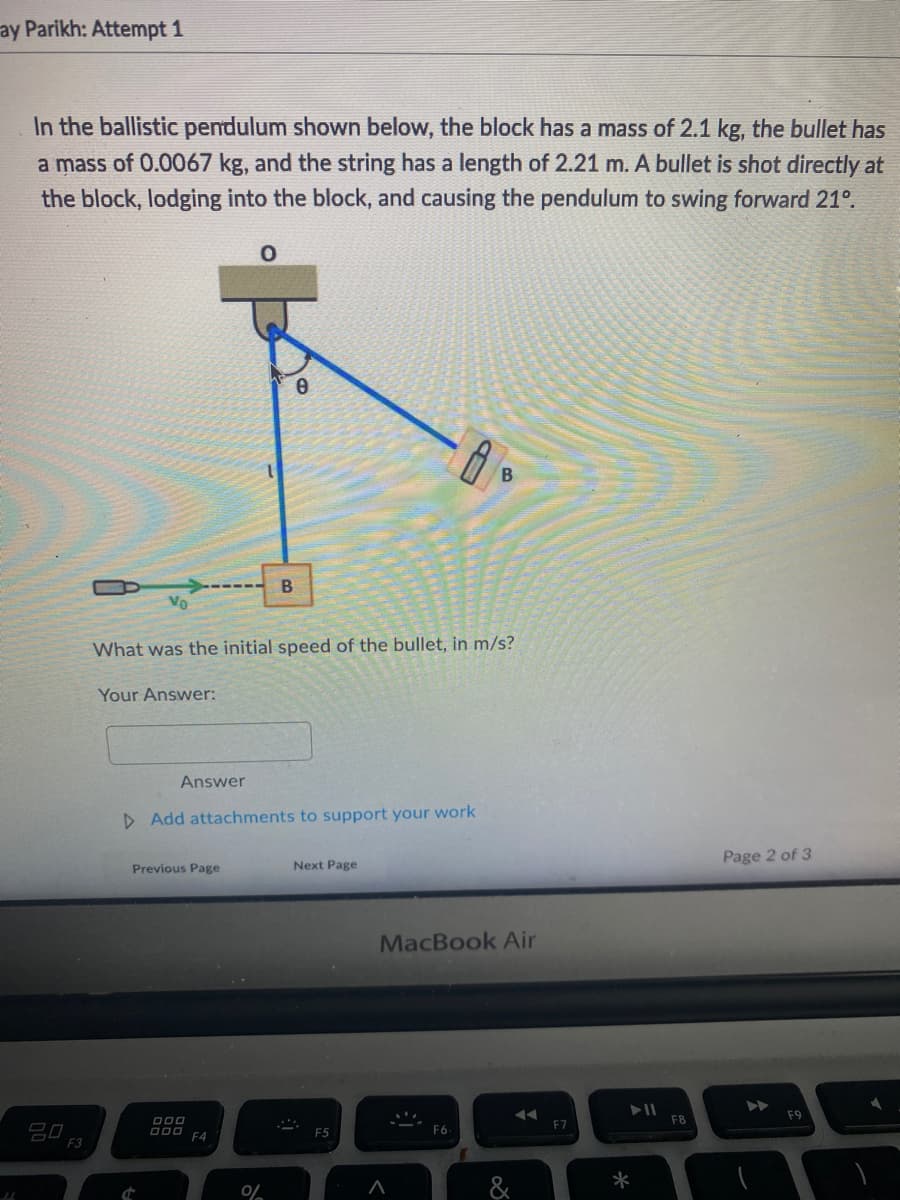In the ballistic pendulum shown below, the block has a mass of 2.1 kg, the bullet has a mass of 0.0067 kg, and the string has a length of 2.21 m. A bullet is shot directly at the block, lodging into the block, and causing the pendulum to swing forward 21°. 0
In the ballistic pendulum shown below, the block has a mass of 2.1 kg, the bullet has a mass of 0.0067 kg, and the string has a length of 2.21 m. A bullet is shot directly at the block, lodging into the block, and causing the pendulum to swing forward 21°. 0
Classical Dynamics of Particles and Systems
5th Edition
ISBN:9780534408961
Author:Stephen T. Thornton, Jerry B. Marion
Publisher:Stephen T. Thornton, Jerry B. Marion
Chapter9: Dynamics Of A System Of Particles
Section: Chapter Questions
Problem 9.60P
Related questions
Topic Video
Question

Transcribed Image Text:ay Parikh: Attempt 1
In the ballistic pendulum shown below, the block has a mass of 2.1 kg, the bullet has
a mass of 0.0067 kg, and the string has a length of 2.21 m. A bullet is shot directly at
the block, lodging into the block, and causing the pendulum to swing forward 21°.
80,
F3
Vo
Your Answer:
Answer
0
What was the initial speed of the bullet, in m/s?
Previous Page
000
000 F4
0
▷ Add attachments to support your work
B
%
Next Page
F5
B
MacBook Air
A
F6
F7
► 11
F8
Page 2 of 3
F9
Expert Solution
This question has been solved!
Explore an expertly crafted, step-by-step solution for a thorough understanding of key concepts.
This is a popular solution!
Trending now
This is a popular solution!
Step by step
Solved in 5 steps with 1 images

Knowledge Booster
Learn more about
Need a deep-dive on the concept behind this application? Look no further. Learn more about this topic, physics and related others by exploring similar questions and additional content below.Recommended textbooks for you

Classical Dynamics of Particles and Systems
Physics
ISBN:
9780534408961
Author:
Stephen T. Thornton, Jerry B. Marion
Publisher:
Cengage Learning

College Physics
Physics
ISBN:
9781305952300
Author:
Raymond A. Serway, Chris Vuille
Publisher:
Cengage Learning

Classical Dynamics of Particles and Systems
Physics
ISBN:
9780534408961
Author:
Stephen T. Thornton, Jerry B. Marion
Publisher:
Cengage Learning

College Physics
Physics
ISBN:
9781305952300
Author:
Raymond A. Serway, Chris Vuille
Publisher:
Cengage Learning